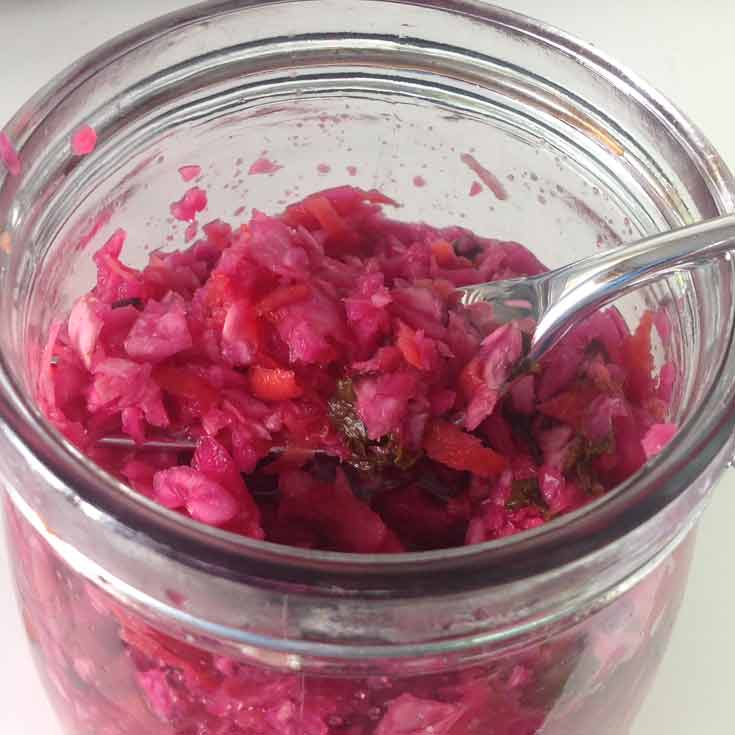Cultured or fermented vegetables are simple to make, last many months and are great to keep in the fridge to add to meals. Containing probiotics, they are extra healthy for you too.
Some examples of fermented vegetables are:
- sauerkraut,
- pickles
- kimchi
- fermented chutneys
- condiments.
The process is simple, involving preparing the vegetables and placing into a jar with a liquid of ‘brine’ or culture starter and left for a period of time for the beneficial microorganisms to process the sugars into lactic acid.
What are the benefits of cultured vegetables?
The process of lacto-fermentation enhances the bioavailability of the nutrients of the vegetables, enhancing their nutrition and making them easier to digest. Consuming them also gives you a healthy dose of friendly bacteria that help to balance the community of microorganisms that live in your gut.
These organisms are critical to our health, in particular our digestive system, and our immune system. Eating fermented vegetables can even help curb our cravings for sweet foods, and help with candidiasis, a common yeast overgrowth problem.
How do I start fermenting vegetables.
There are three common ways to make cultured vegetables;
- A culture starter.
- Using salt
- Using whey
Culture starter for fermenting vegetables.
Using a culture starter involves mixing a sachet of powder with water to create the ‘brine’. This method uses potent and robust beneficial bacteria, often ferments faster, and is low or no salt.
The salt method
The salt only method is the traditional method of fermenting, also known as wild fermentation. The salt draws the water from the vegetables to help create the brine, and creating an environment inhospitable to harmful bacteria. The vegetables are then left for a period of time to ferment until ready, and then put in cold storage or refrigerated.
Using whey
Using whey as the liquid for culturing vegetables adds bacteria to to help the fermentation. Using whey may not be suitable for those avoiding dairy.
Fermented Vegetable Recipe
Once you’ve chosen your method, simply find a recipe. It doesn’t need to be complicated. Check out our Pinterest board for ideas. You will need glass jars or a crock to store your vegetables in, but no other specialised equipment is required, although a food processor can be useful to chop the vegetables.
Note: Spring or mineral water may be needed if you need to add water to your ferment, and your water supply is fluoridated.
Read More In Our Good Gut Health Series
Understanding Your Gut Health & Microbiome
Difference between Probiotics & Prebiotics
What Is Kefir & How Does It Taste?
How To Make Kefir
Using Kefir In A Recipe – Greek Tzatziki Sauce
Using Fermented Vegtable In A Recipe – Water Cress Salad

